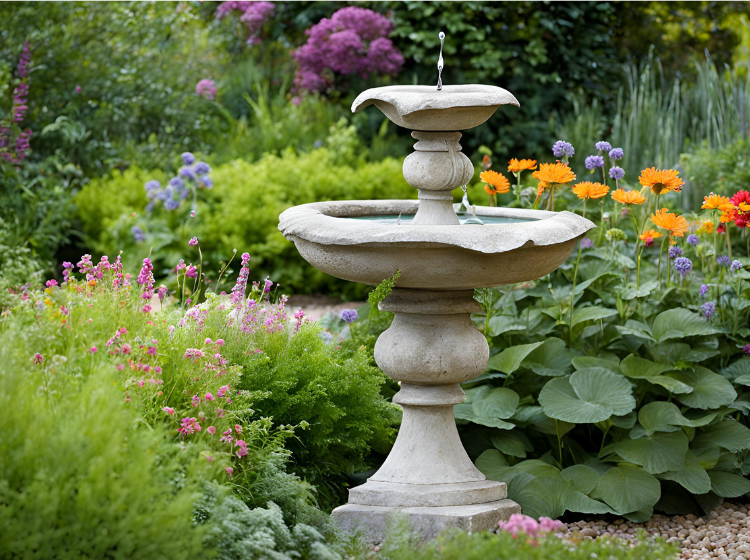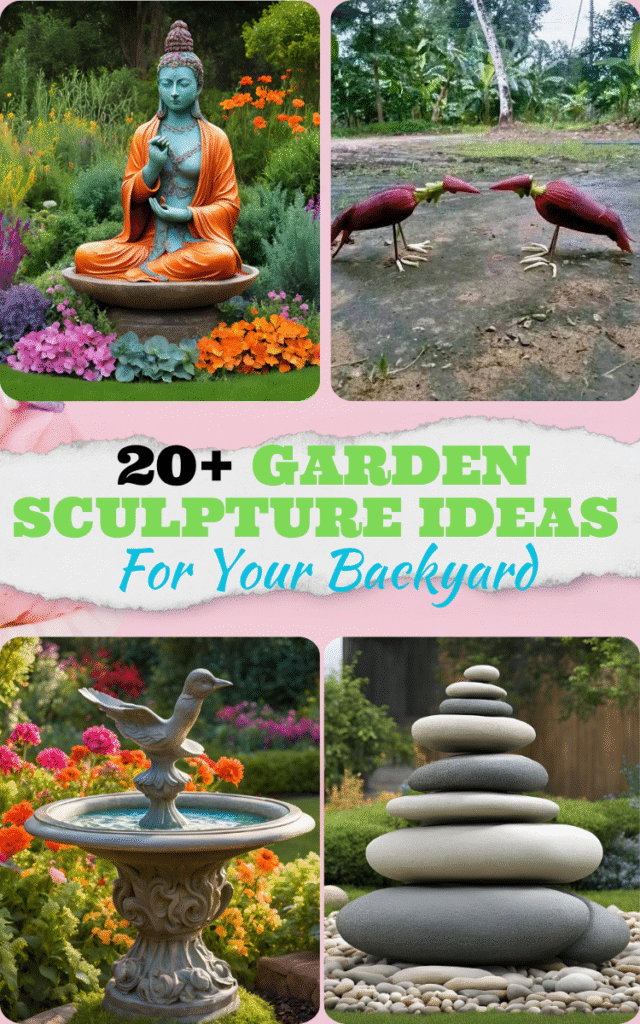
Garden sculptures are a beautiful way to add personality and artistic flair to your backyard. Whether you’re looking for a bold focal point or subtle accents that blend with nature, sculptures can transform any outdoor space into a work of art. From modern metal pieces to whimsical stone figures, garden sculptures offer endless opportunities to enhance your garden’s aesthetic. In this collection of 20+ garden sculpture ideas, you’ll discover how to create a captivating landscape that reflects your style, adds depth, and invites visual interest into your backyard oasis.
Benefits of Adding Garden Sculptures
Before we explore the specific garden sculpture ideas, let’s look at some of the benefits of adding these features to your outdoor space:
A. Visual Interest
One of the primary benefits of incorporating garden sculptures is the visual interest they bring. A well-placed sculpture can serve as a striking focal point, drawing the eye and creating a sense of intrigue. This can be particularly important in larger gardens, where a sculpture can break up vast expanses of greenery and provide a narrative or theme that ties different areas together.
B. Artistic Expression
Sculptures also serve as a form of artistic expression, allowing you to showcase your tastes and preferences. From traditional statues to modern abstract pieces, the type of sculpture you choose reflects your personality and style. This artistic flair can turn your garden into an extension of your home’s decor, creating a cohesive feel throughout your living space.
C. Enhancing the Landscape
Sculptures can beautifully complement your garden’s natural elements, such as flowers, trees, and shrubs. By carefully selecting sculptures that harmonize with your landscape design, you can create a balanced and inviting environment. This interaction between art and nature can elevate your garden from merely a collection of plants to a curated space that tells a story.
D. Outdoor Atmosphere
Lastly, the right garden sculpture can set the tone for the atmosphere you wish to create. Whether you’re aiming for a serene retreat, a whimsical play area for children, or an elegant entertaining space, sculptures can enhance the overall mood. Art can evoke emotions and inspire tranquility, making your garden a haven for relaxation and enjoyment.
Types of Garden Sculptures
A. Traditional Sculptures
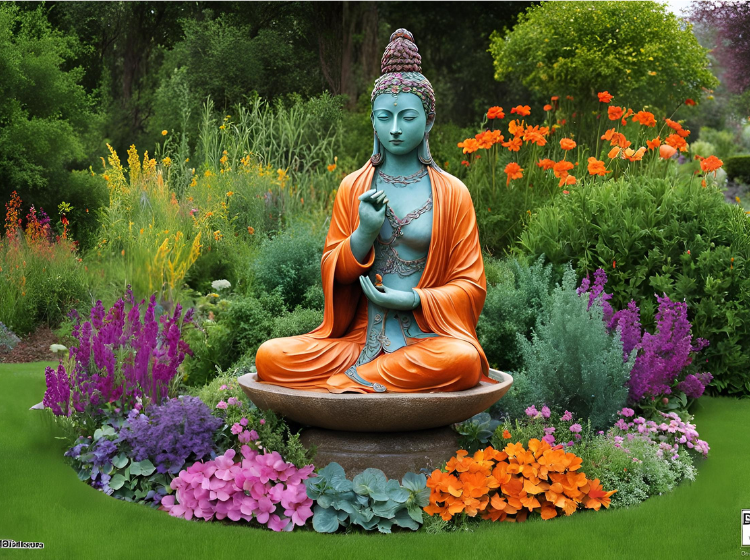
Traditional sculptures, such as statues of animals, humans, or mythical figures, have been used in gardens for centuries. These timeless pieces can add a touch of elegance and history to your outdoor space. A classic stone statue of a cherub or a lion can evoke a sense of grandeur and sophistication, perfect for formal gardens or more structured landscapes.
When incorporating traditional sculptures, consider their placement carefully. Position them where they can be easily admired, such as at the end of a garden path or in a prominent flower bed. These statues often work well as standalone features or in combination with lush greenery, allowing the natural elements to frame and highlight the art.
Additionally, traditional sculptures can also serve as conversation starters. Guests will often inquire about the story or inspiration behind these pieces, making them a great addition to social gatherings. Whether sourced from local artists or acquired from antique shops, traditional sculptures can create a timeless charm in your backyard.
B. Abstract Sculptures
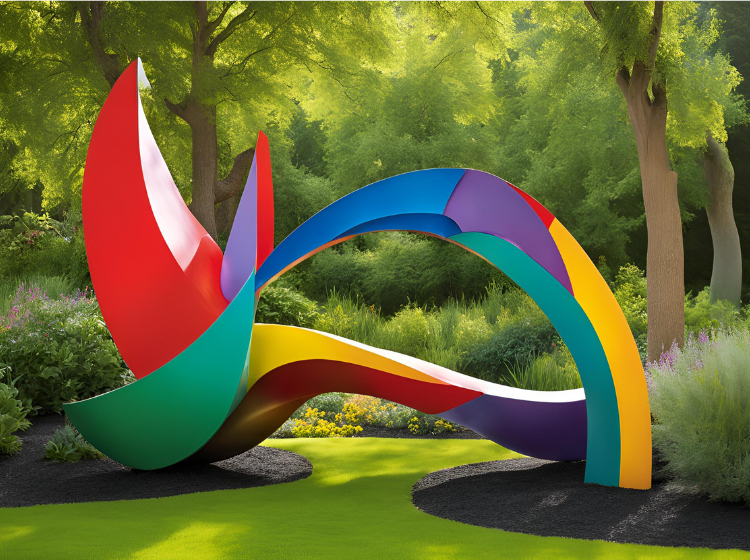
For those who prefer a modern twist, abstract sculptures offer a unique approach to garden art. These pieces focus on form, material, and the interplay of shapes rather than representing specific subjects. Abstract sculptures can range from geometric metal pieces to fluid, organic forms crafted from stone or glass, allowing for endless creative possibilities.
Incorporating abstract sculptures into your garden can create a dynamic visual impact, particularly when paired with contrasting plant life. For example, a sleek metal sculpture can stand out against vibrant flowering plants, creating a striking juxtaposition. Additionally, the abstract nature of these pieces can evoke various interpretations, encouraging viewers to engage with the art on a personal level.
Placement is crucial for abstract sculptures; consider positioning them at different heights or angles to create an engaging flow throughout your garden. Grouping several smaller abstract pieces together can also enhance visual interest and create a mini-gallery effect. The key is to experiment and find placements that resonate with your personal style.
C. Functional Sculptures
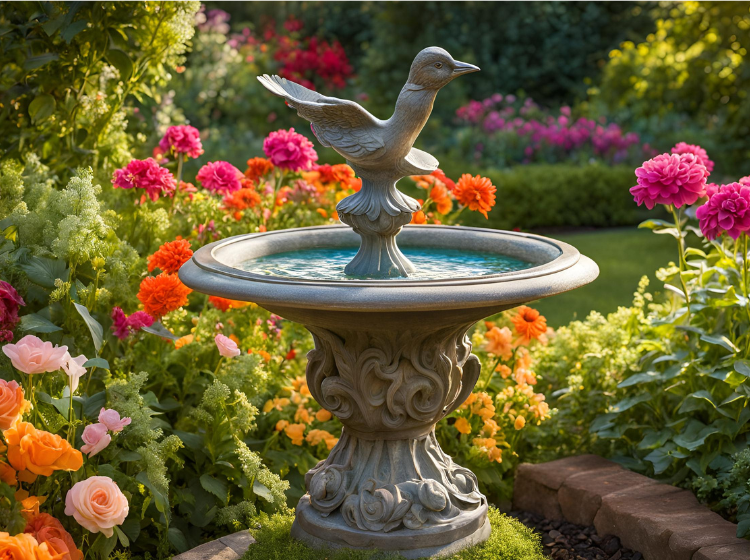
Functional sculptures combine artistry with practicality, offering both aesthetic appeal and usability. Examples include benches, birdbaths, or even trellises designed with sculptural elements. These pieces provide an opportunity to blend form and function, ensuring that your garden remains both beautiful and practical.
When selecting functional sculptures, consider how they can serve your needs while also enhancing your garden’s design. For instance, a beautifully crafted bench can provide a peaceful spot for contemplation while doubling as a decorative element. Birdbaths not only attract wildlife but can also serve as stunning focal points adorned with intricate designs.
Choosing functional sculptures can also encourage more frequent use of your garden. A seating area invites relaxation and socializing, while birdbaths can foster a connection to nature. These sculptures add layers of utility and artistry, making them a smart choice for any garden design.
D. DIY Garden Sculptures
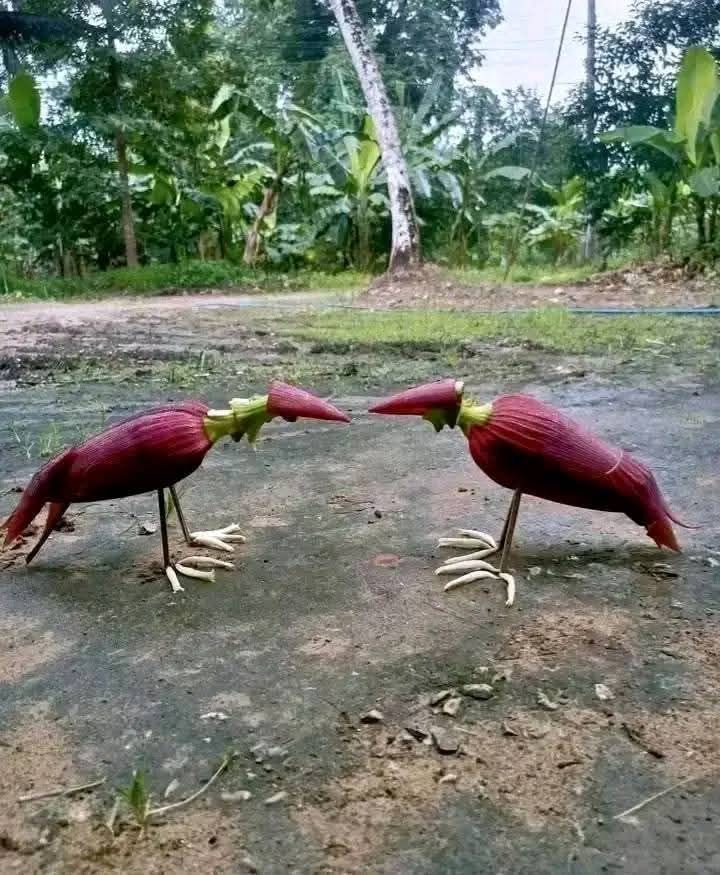
For the creatively inclined, DIY garden sculptures present an exciting opportunity to personalize your outdoor space. Using recycled materials, natural elements, or basic crafting supplies, you can create unique art pieces that reflect your style and values. This approach not only saves money but also allows you to express your creativity in a meaningful way.
Common materials for DIY sculptures include old garden tools, wooden pallets, or even stones. For instance, you could stack stones to form a cairn or repurpose old metal objects into a whimsical creature. The possibilities are endless, limited only by your imagination and available materials.
Creating your own sculptures can also be a fun family project. Involving children or friends can make the process more enjoyable and result in a sense of accomplishment when your art is displayed in the garden. Plus, each piece tells a story and adds a personal touch that purchased sculptures simply cannot replicate.
17 Creative Garden Sculpture Ideas
1. Classic Stone Statues
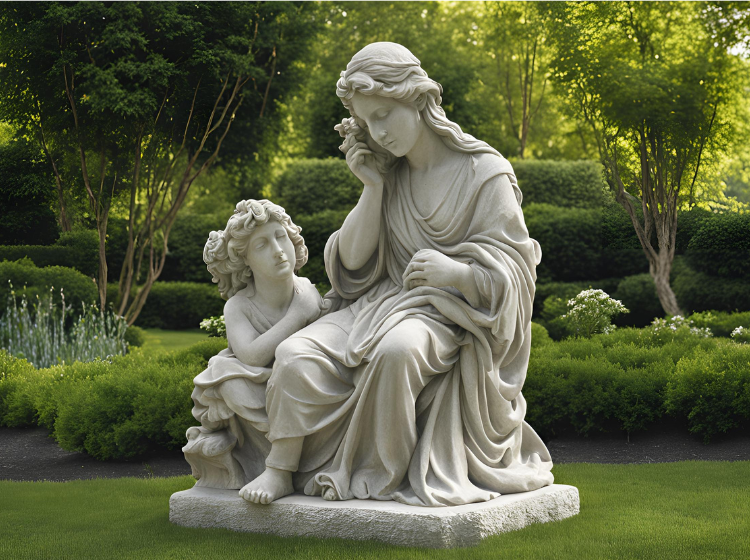
Classic stone statues remain a popular choice for gardens, evoking a sense of timeless beauty and elegance. These sculptures can range from finely detailed depictions of mythological figures to simple geometric shapes. The natural textures and colors of stone can complement the lush greens and vibrant flowers of any landscape, creating a striking visual contrast.
When selecting a classic stone statue, consider the scale and style that best fits your garden. A large statue can serve as a focal point in a formal garden, while smaller figures may work better in cottage-style or more relaxed settings. Pay attention to the surrounding plants, ensuring that the statue harmonizes with its environment rather than competing for attention.
Placement is key; consider positioning the statue at the end of a pathway or near a seating area for maximum impact. Surrounding it with flowering plants or soft grasses can create an inviting atmosphere, enhancing the sculpture’s beauty and encouraging guests to pause and admire it.
2. Metal Art Installations
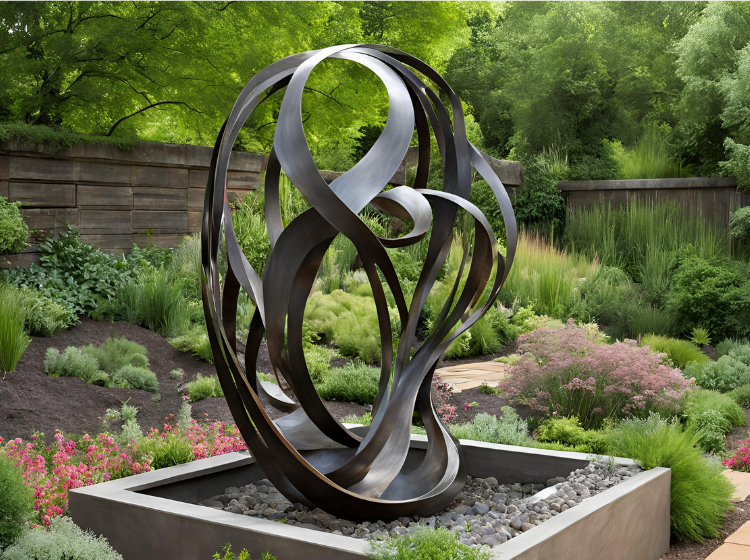
Metal art installations can introduce a modern flair to your garden, with their ability to reflect light and create dynamic visual effects. From intricately designed metal screens to abstract sculptures, these pieces can add a contemporary touch while also playing with the natural surroundings. The durability of metal also makes it a practical choice for outdoor art, standing up to various weather conditions.
Choosing the right metal sculpture involves considering both the design and the finish. Brightly polished metals can catch the sun and create stunning reflections, while rusted or patinaed finishes can add a rustic charm. Mixing different types of metal sculptures can create a cohesive yet diverse art collection throughout your garden.
Placement of metal sculptures can greatly enhance their effect. Consider positioning them near water features or areas with abundant sunlight to maximize their reflective qualities. When viewed from different angles, metal sculptures can change appearance throughout the day, providing ongoing visual interest.
3. Wooden Sculptures

Wooden sculptures bring warmth and organic beauty to any garden, making them an excellent choice for creating a natural atmosphere. Hand-carved wooden pieces can showcase intricate designs or simple forms that evoke the feeling of being in a woodland setting. The natural grains and textures of wood can enhance the overall aesthetic of your outdoor space.
When selecting wooden sculptures, consider the type of wood and its durability against the elements. Hardwoods such as teak or cedar can withstand outdoor conditions better than softer woods. To prolong the life of wooden sculptures, apply a protective finish or sealant to help resist moisture and pests.
Strategic placement of wooden sculptures is essential. Positioning them near native plants or natural features can help them blend seamlessly into the landscape. Additionally, using wooden sculptures as seating or functional art can enhance their utility while maintaining their artistic appeal.
4. Concrete Garden Orbs
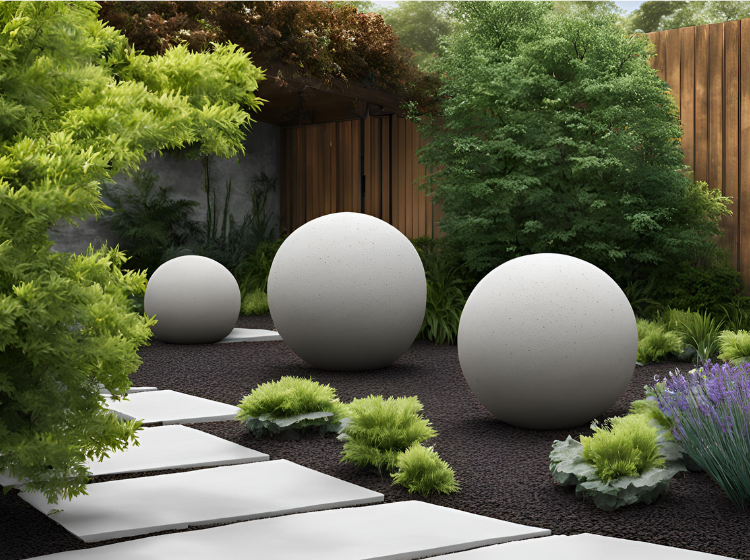
Concrete garden orbs are a trendy addition that can infuse a modern touch into your backyard. These spherical sculptures can vary in size and texture, from smooth finishes to rough, rustic surfaces. Their versatility allows them to fit in various garden styles, making them a popular choice for contemporary and minimalist designs.
When incorporating concrete orbs, consider grouping different sizes together for a striking visual effect. Placing a larger orb among smaller ones can create a dynamic arrangement that draws the eye. These sculptures also work well when paired with contrasting plants, such as vibrant flowering bushes or spiky succulents, enhancing their appeal.
In terms of maintenance, concrete is durable but can crack over time if exposed to harsh weather conditions. To protect your orbs, consider placing them in sheltered areas or applying a sealant to guard against moisture. With proper care, concrete garden orbs can provide a long-lasting artistic presence in your backyard.
5. Whimsical Fairy Houses

Whimsical fairy houses can add a sense of enchantment and playfulness to your garden, inviting imagination and creativity. These charming structures, often made from wood, clay, or even recycled materials, can be adorned with colorful paint and intricate details. Placing these fairy houses among flowers and plants can create a magical atmosphere that delights children and adults alike.
When incorporating fairy houses into your garden, consider the scale and design. Smaller houses work well nestled among flower beds, while larger structures can serve as focal points in a designated fairy garden area. Use natural elements, such as stones and moss, to enhance the whimsical feel and integrate the houses into their surroundings.
Creating a themed fairy garden can also be a fun family project. Involve children in decorating the houses and selecting surrounding plants, encouraging their creativity and sense of ownership. This interactive element can turn your garden into a magical realm that sparks joy and curiosity.
6. Kinetic Wind Sculptures
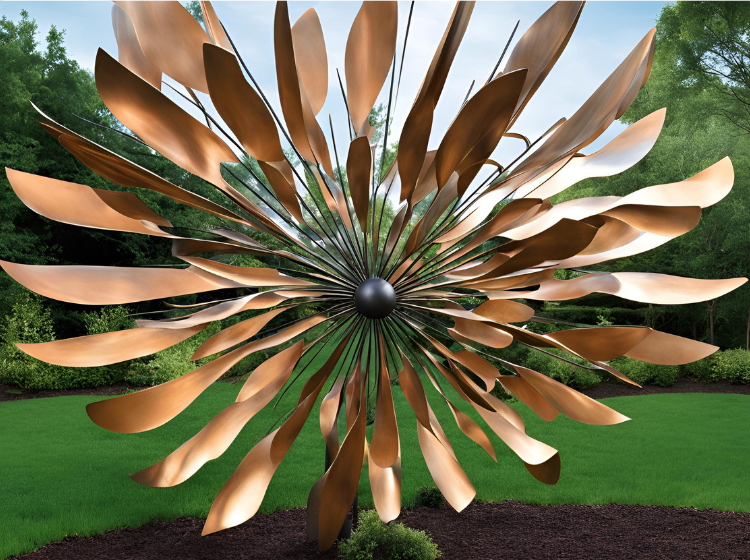
Kinetic wind sculptures add a dynamic and playful element to your garden, as they move gracefully with the breeze. These sculptures, often made from metal or durable plastic, can take various forms, from spinning elements to cascading designs that dance in the wind. The movement of these sculptures can create an ever-changing visual display that captivates onlookers.
When selecting kinetic wind sculptures, consider the materials and design to ensure they can withstand outdoor conditions. Look for pieces with a sturdy base and balanced design to prevent tipping in strong winds. Additionally, choosing a design that complements your garden’s aesthetic will help maintain a cohesive look.
Placement is essential for maximizing the effect of kinetic sculptures. Position them in open areas where they can catch the wind, such as near pathways or garden edges. These sculptures not only provide visual interest but also engage the senses, as their movement adds a lively energy to the garden atmosphere.
7. Rustic Birdbaths with Sculptural Elements
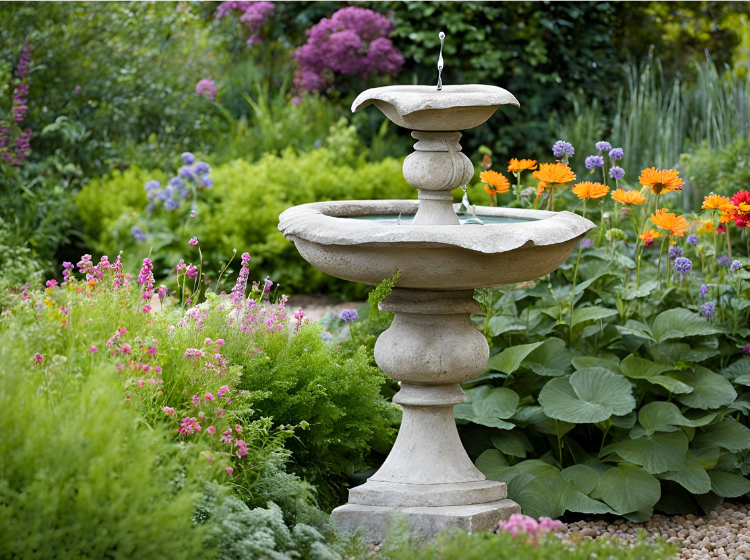
Birdbaths can serve as both functional and artistic garden elements, attracting birds while enhancing the landscape. Rustic birdbaths, crafted from materials like stone, terracotta, or reclaimed wood, can provide a charming focal point in your garden. The added sculptural elements can range from animal figures to intricate patterns, making them visually appealing as well.
When choosing a birdbath, consider the height and design to ensure it is accessible for birds. A shallow basin is preferable, as it allows smaller birds to bathe safely. Additionally, incorporating decorative elements can enhance the birdbath’s aesthetic, creating a seamless blend of art and functionality.
Placing your birdbath in a quiet area of the garden, preferably near trees or shrubs, can encourage birds to visit. Surrounding the birdbath with native plants can also create a natural habitat, attracting a variety of wildlife. This combination of beauty and functionality can turn your garden into a haven for both birds and art lovers alike.
8. Recycled Metal Sculptures
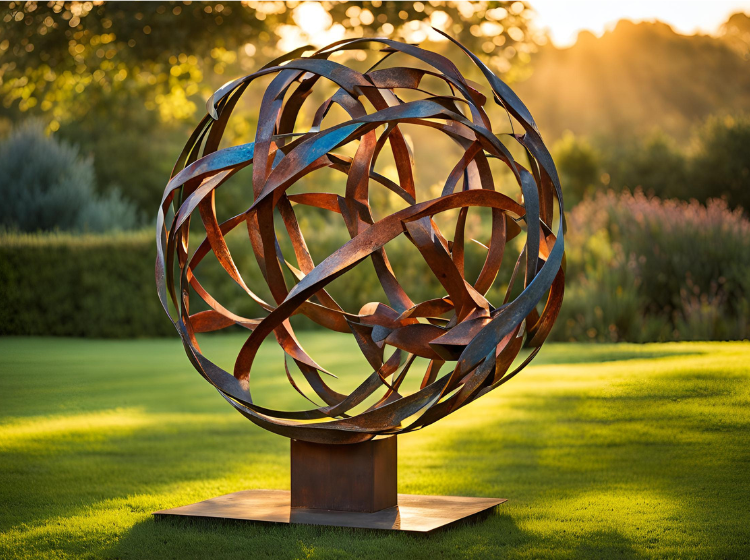
Recycled metal sculptures are not only eco-friendly but also offer a unique way to incorporate creativity and sustainability into your garden. These sculptures can be crafted from various materials, including old tools, scrap metal, and discarded machinery. The creative potential is endless, resulting in whimsical animals, abstract shapes, or even functional art pieces.
Choosing recycled metal sculptures allows you to make a statement about sustainability while adding character to your garden. These sculptures often come with a story, showcasing the history of the materials used. Placing these pieces in prominent locations can spark conversations and encourage guests to appreciate the artistry and message behind the art.
Maintenance of recycled metal sculptures is generally low, as metal is durable and weather-resistant. However, keep an eye on rust and wear, especially if the sculptures are made from untreated materials. A simple protective coating can help extend their life while ensuring they remain a vibrant part of your outdoor space.
9. Nature-Inspired Clay Sculptures
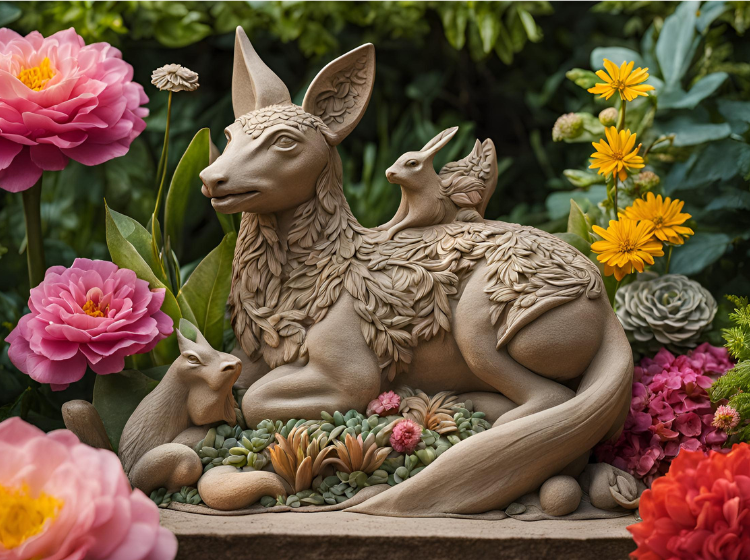
Nature-inspired clay sculptures bring a touch of organic beauty to your garden. These pieces can range from intricate flower designs to abstract forms that mimic natural elements. The natural hues and textures of clay can seamlessly blend with the surrounding environment, enhancing the overall aesthetic of your outdoor space.
When selecting clay sculptures, consider their size and placement within your garden. Smaller pieces can be placed among flower beds, while larger sculptures can serve as striking focal points. Pay attention to the color and texture of the clay, ensuring it complements your existing plants and landscape.
To ensure the longevity of clay sculptures, consider sealing them with a weather-resistant finish. This will help protect them from moisture and UV rays, keeping their beauty intact. With proper care, nature-inspired clay sculptures can remain a beautiful addition to your garden for years to come.
10. Mosaic Garden Tiles
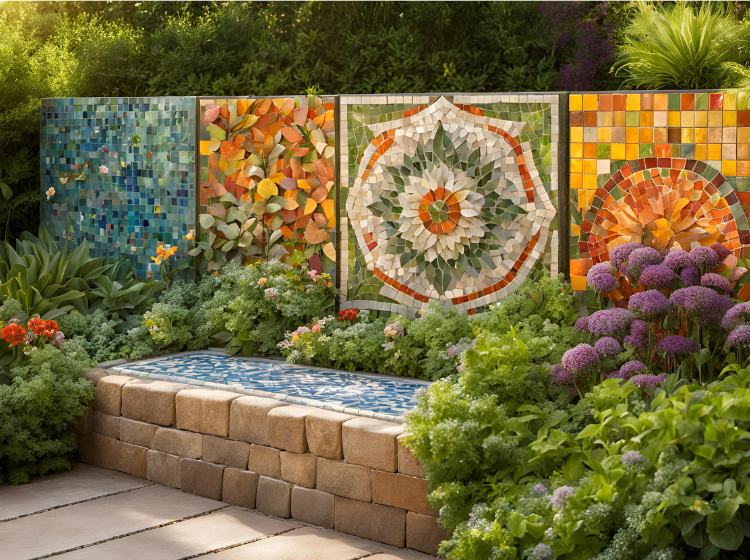
Mosaic garden tiles offer a colorful and artistic way to enhance your outdoor space. These tiles can be used as stepping stones, garden paths, or decorative borders, providing a splash of color and creativity. The intricate designs created by combining different materials can add a unique charm to any garden style.
When incorporating mosaic tiles, consider the overall theme of your garden. Vibrant colors can evoke a sense of playfulness, while muted tones can create a more serene atmosphere. Arrange the tiles in patterns that guide visitors through your garden, creating an interactive experience as they explore.
Mosaic tiles are also an excellent DIY project, allowing you to express your creativity. Gather broken pottery, glass, or other materials to create custom designs that reflect your personality. The process of creating and placing these tiles can be a fulfilling way to add a personal touch to your garden.
11. Personalized Family Name Signs

Personalized family name signs can enhance your garden’s charm while providing a sense of identity and ownership. These signs can be crafted from various materials, including wood, metal, or stone, and can feature your family name, a welcome message, or even a garden theme. Incorporating personalized elements helps create a warm and inviting atmosphere.
When designing your family name sign, consider the style that best fits your garden’s aesthetic. Rustic wood signs work well in cottage gardens, while sleek metal designs can complement modern landscapes. Adding decorative elements like floral motifs or wildlife images can further enhance the sign’s appeal.
Placement of your family name sign is essential for visibility. Position it at the entrance of your garden or near pathways, welcoming guests as they arrive. A well-placed sign not only serves a functional purpose but also adds a personal touch that makes your garden feel more like home.
12. Garden Gnomes with a Twist
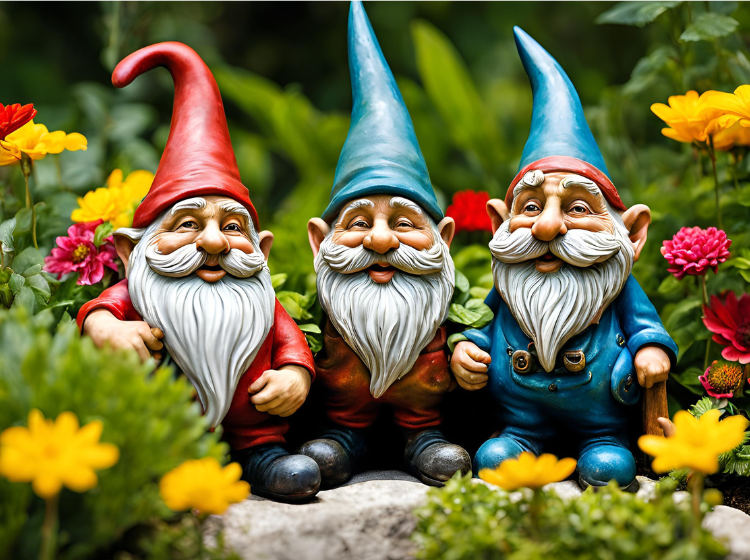
Garden gnomes are a classic addition to outdoor spaces, but incorporating unique designs can bring a fresh perspective to this traditional art. Whimsical gnomes with modern or abstract features can inject a playful spirit into your garden, appealing to both children and adults. These quirky characters can range from brightly painted figures to more sophisticated, artistic interpretations.
When selecting garden gnomes, consider their size and placement within your landscape. Larger gnomes can serve as focal points in flower beds, while smaller figures can be tucked among plants for a delightful surprise. Mixing traditional gnomes with contemporary designs can create an engaging visual narrative throughout your garden.
Gnomes can also be a conversation starter, providing guests with a fun story or theme to discuss. Create a playful garden scene by grouping several gnomes together, engaging in various activities or adventures. This imaginative approach to garden decor can evoke joy and creativity in your outdoor space.
13. Living Plant Sculptures
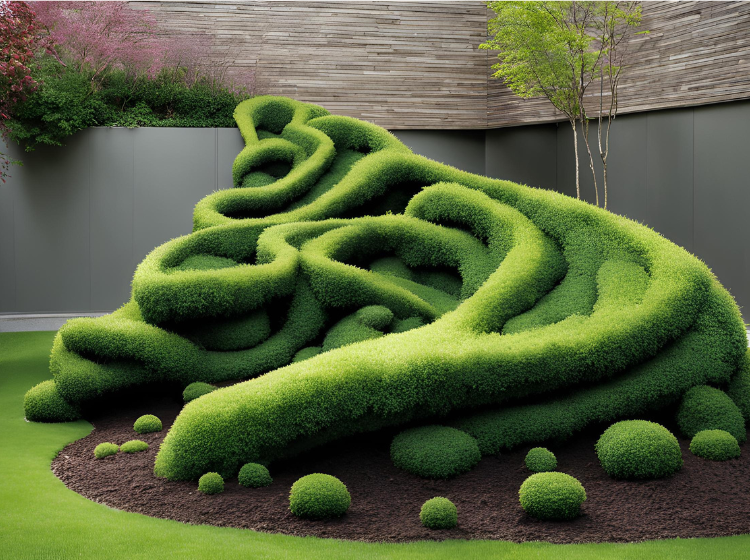
Living plant sculptures combine the beauty of art with the vibrancy of nature. These sculptures utilize live plants, moss, or other natural elements to create striking displays that evolve over time. From topiary designs to elaborate arrangements of succulents, living sculptures can enhance the organic feel of your garden.
When creating living plant sculptures, choose plants that thrive in your local climate and soil conditions. Consider the growth patterns and sizes of the plants to ensure they can be shaped effectively. Topiary techniques can be used to create geometric shapes, while arrangements of succulents can form intricate designs.
Placement of living sculptures should be considered carefully, as their appearance will change with the seasons. Position them in areas where they can receive adequate sunlight and moisture. Regular maintenance is essential to keep these sculptures looking their best; pruning and reshaping will help maintain their intended design.
14. Ceramic Animals or Insects
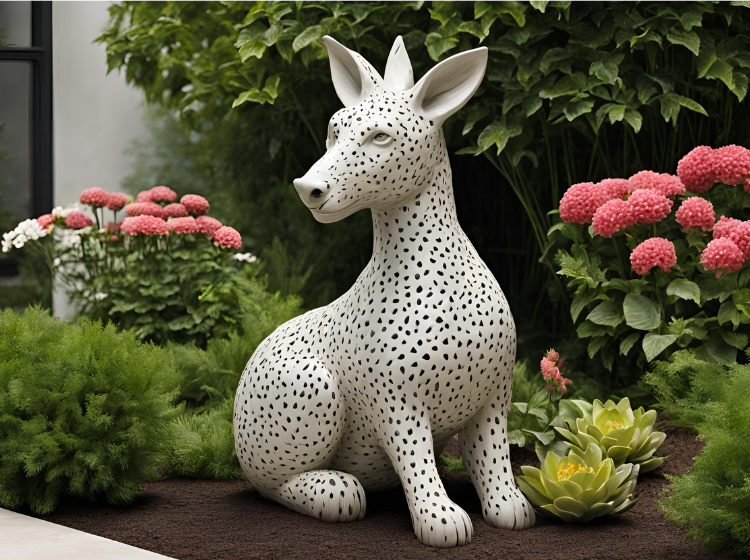
Ceramic animals or insects can bring a delightful touch of whimsy to your garden. These decorative pieces come in various designs, from realistic depictions to abstract representations, allowing you to choose ones that resonate with your style. The colorful glazes and intricate details of ceramic art can enhance the overall aesthetic of your outdoor space.
When selecting ceramic sculptures, consider the scale and placement within your garden. Smaller pieces can be placed among flower beds or on shelves, while larger sculptures can serve as striking focal points in open areas. Mixing different animal designs can create a playful narrative, inviting curiosity and engagement from guests.
Ceramic sculptures are also generally durable and weather-resistant, making them suitable for outdoor environments. However, it’s essential to check for proper sealing to prevent moisture damage. Proper care and placement will ensure these delightful pieces add charm to your garden for years to come.
15. Stone Cairns or Stacked Rocks
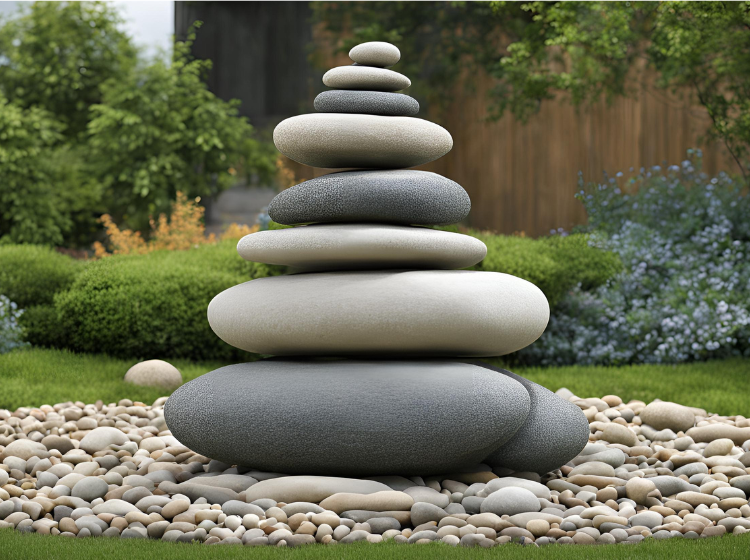
Stone cairns or stacked rocks offer a natural and zen-like element to your garden. These sculptures can be crafted from local stones or collected rocks, creating a sense of harmony and balance. The simple beauty of stacked stones can evoke feelings of tranquility and connection to nature, making them an ideal choice for meditation spaces or quiet retreats.
When creating stone cairns, consider the size and balance of the stones to ensure stability. Experiment with different shapes and sizes to achieve a visually appealing arrangement. Incorporating natural elements, such as moss or surrounding plants, can enhance the organic feel of the cairn.
Placement is crucial; position your stone cairn in a serene corner of your garden where it can be appreciated. Creating a pathway leading to the cairn can also enhance its prominence, inviting visitors to explore and reflect. This natural sculpture not only beautifies your garden but also promotes mindfulness and connection with the outdoors.
16. Hanging Garden Sculptures
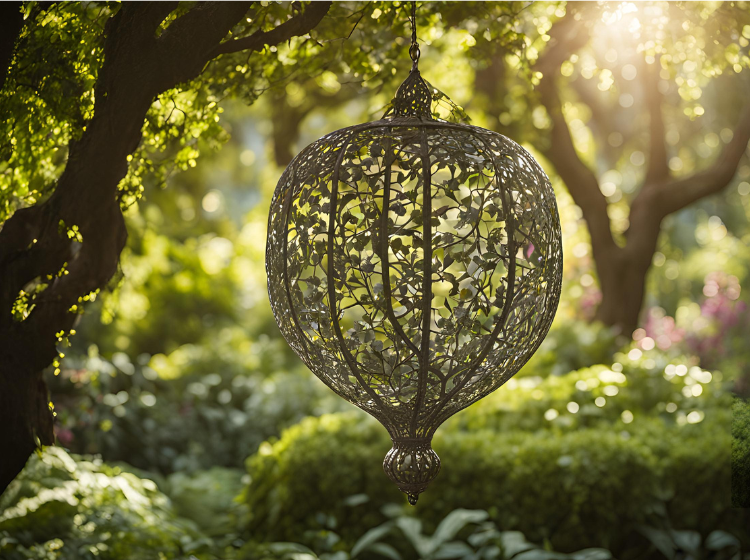
Hanging garden sculptures can add a unique vertical dimension to your outdoor space. These pieces can range from lightweight metal designs to colorful fabric or paper art, creating a sense of movement and intrigue. Hanging sculptures can be particularly effective in small gardens, where they draw the eye upward and maximize the use of vertical space.
When selecting hanging sculptures, consider their materials and durability. Lightweight options are best for areas with high wind, while heavier pieces may require more secure mounting. Look for designs that incorporate movement, such as mobiles or wind chimes, to add an engaging element to your garden.
Placement of hanging sculptures can vary; consider suspending them from trees, pergolas, or even hooks along garden fences. Ensure they are positioned at a height that allows for easy viewing without obstructing pathways. These sculptures can create a lively atmosphere, as they sway gently in the breeze and capture the sunlight in captivating ways.
17. Colorful Fence Panels

Colorful fence panels can transform your garden into a vibrant and inviting space. These panels can be painted or stained in a variety of hues, allowing you to express your personality and style. By incorporating colorful fences, you can define your garden space while adding a playful touch to the overall landscape.
When choosing colors for your fence panels, consider the overall theme of your garden. Bright colors can create a cheerful atmosphere, while softer tones can evoke a sense of tranquility. You can even create a gradient effect or use multiple colors to add visual interest and depth to your garden.
To enhance the colorful panels, consider complementing them with plants and decorations that echo the chosen colors. This creates a cohesive look, tying together the various elements of your garden. Colorful fence panels not only serve a practical purpose but also provide a canvas for your creativity, making your outdoor space truly unique.
18. Garden Pathways with Artistic Flair
Artistic garden pathways can guide visitors through your outdoor space while providing visual intrigue. These pathways can be constructed from various materials, including stones, bricks, or tiles, and can feature unique designs, colors, or patterns. An artistic pathway invites exploration and can significantly enhance the overall aesthetic of your garden.
When designing artistic pathways, consider the layout and flow of your garden. Curved paths can create a more organic feel, while straight lines may lend a more formal touch. Incorporating different materials or colors along the path can add visual interest and guide visitors through your garden.
Maintaining the pathways is essential to ensure their longevity and appearance. Regularly remove weeds and debris to keep the area clean and inviting. Adding lighting along the path can also enhance its beauty and safety, allowing your garden to be enjoyed during the evening hours.
19. Upcycled Furniture as Garden Art
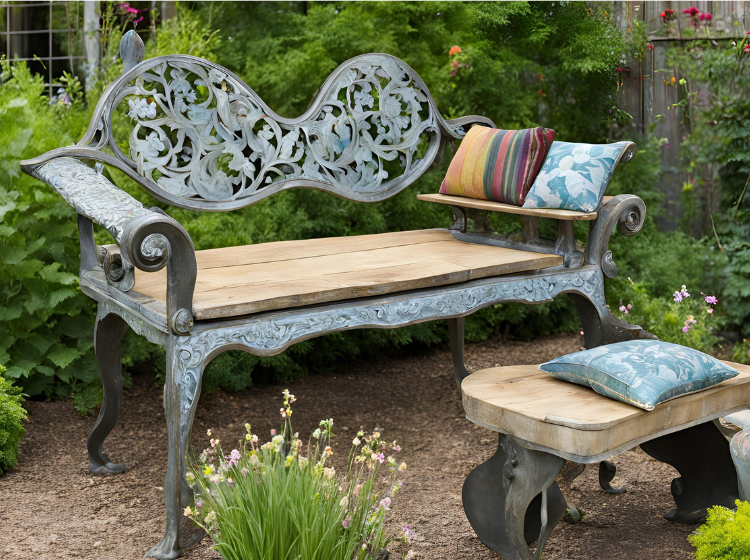
Upcycled furniture offers a creative way to incorporate sustainable art into your garden. Old chairs, tables, or benches can be transformed into whimsical garden decor, serving both functional and artistic purposes. With a little imagination, you can create unique pieces that showcase your personality while reducing waste.
When selecting furniture to upcycle, consider the materials and durability to withstand outdoor conditions. Wooden pieces can be painted or stained, while metal furniture can be left as is or treated with protective coatings. Creative repurposing ideas include turning chairs into plant stands or tables into whimsical planters.
Placement of upcycled furniture should be strategic to maximize both functionality and visual appeal. Group seating areas can encourage social gatherings, while decorative tables can provide a place for plants or garden art. Upcycled furniture not only enhances the aesthetics of your garden but also tells a story of sustainability and creativity.
20. Solar-Powered Garden Lights
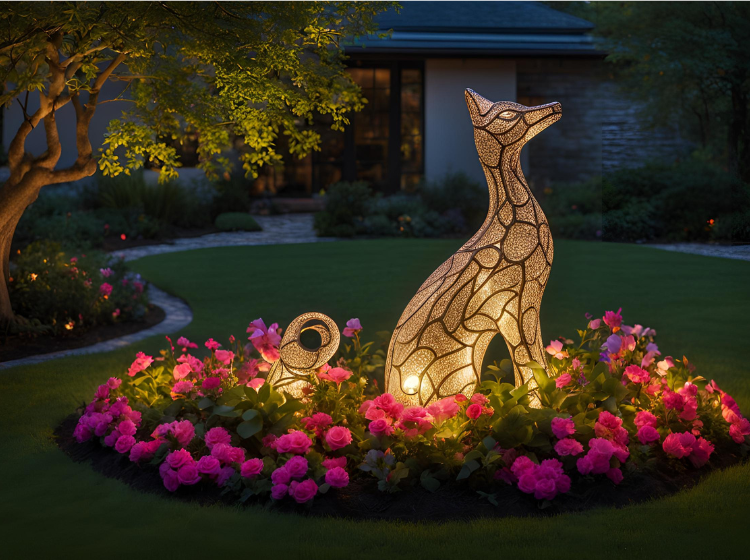
Solar-powered garden lights are an excellent way to illuminate your outdoor space while adding an artistic touch. These lights come in various designs, from whimsical shapes to elegant fixtures, allowing you to enhance the ambiance of your garden. The convenience of solar power means you can light up your garden without worrying about electrical connections or high energy bills.
When selecting solar-powered lights, consider their brightness and design to match your garden’s aesthetic. Pathway lights can guide visitors safely, while decorative lanterns can create a cozy atmosphere. Experiment with different placements, such as lining paths or highlighting specific features in your garden.
Regular maintenance is essential for ensuring the longevity of solar lights. Clean the solar panels periodically to remove dirt and debris, maximizing their efficiency. With proper care, solar-powered garden lights can provide a beautiful glow to your outdoor space, allowing you to enjoy your garden even after the sun sets.
Wrap Up
Incorporating garden sculptures into your backyard is an inspiring way to infuse art and creativity into your outdoor space. Whether you choose classic statues, abstract art, or eco-friendly installations, each sculpture brings its own charm and character to the garden. Carefully select and place sculptures that resonate with your personal taste to elevate the natural beauty of your yard and create a space that is uniquely yours. With these 20+ garden sculpture ideas, your backyard can become a dynamic, artistic sanctuary that you’ll enjoy for years to come.

